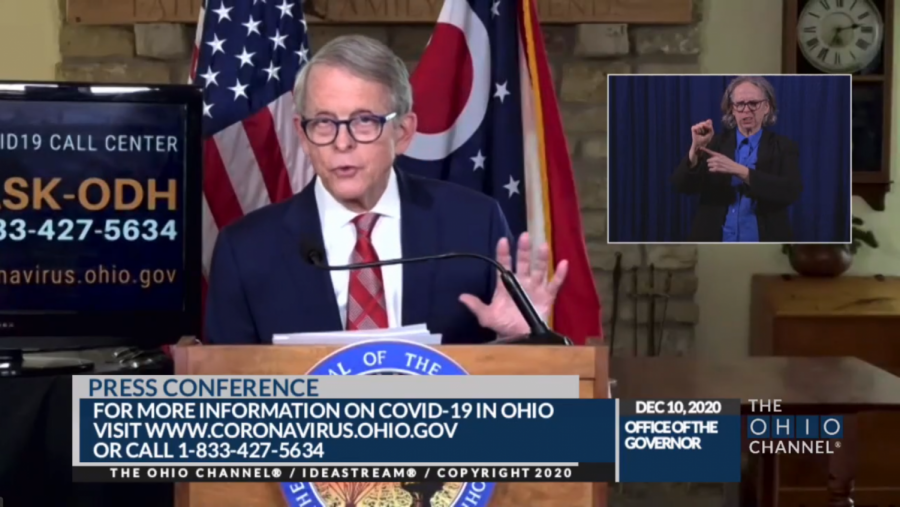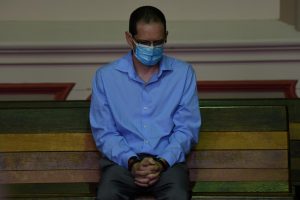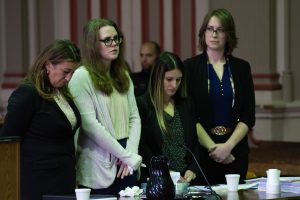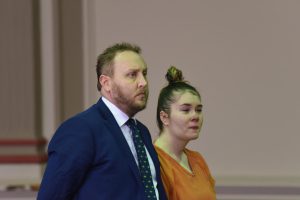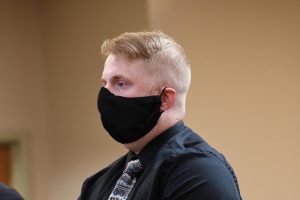DeWine extends nightly curfew, warns of further restrictions forthcoming
December 10, 2020
The Ohio Department of Health at the request of Governor Mike DeWine has extended the statewide nighly curfew through the end of the year.
This comes as the number of positive cases of COVID-19 continues to rise along with deaths while neighboring Guernsey County has been identified for a potential upgrade to a Level 4 Purple Public Health Advisory, the highest and most severe level.
Should their county be upgraded, a plethora of new restrictions and closures will be enacted which has the potential to adversely affect Muskingum County residents.
During his twice-weekly address Thursday afternoon, DeWine invited a dozen doctors to speak on behalf of the necessity for individual Ohioans to follow the state health department’s recommendations to slow the spread of the virus.
Included in those were a renewed push to stay at home, wear a mask and limit social interactions as much as possible, something DeWine said was “absolutely imperative” to prepare for what health officials are projecting to be a holiday spike.
In an effort to achieve his goals, DeWine instructed the Ohio Department of Health to extend the nightly curfew, which runs from 10 p.m. until 5 a.m., daily, through January 2, 2021.
The curfew has been questioned by many Ohioans as it extended many exemptions which resulted in only a select few industries being adversely affected.
Bars were especially hit hard by the order when it was originally issued nearly three-weeks ago, which seceded an earlier order, which had forced bars to stop serving alcoholic beverages after 10 p.m. with patrons required to finish their drinks by 11 p.m., as per the mandate.
At his previous press conference Monday afternoon, DeWine called on federal legislators to pass another round of financial support as the state, along with the country, witnessed a recent increase in unemployment claims in what is historically one of the highest weeks of reported employment throughout the year.
When questioned by a reporter Thursday afternoon in regards to a tweet the governor posted last week, where he suggested additional forthcoming mandates, DeWine admitted that additional federal aid would help alleviate his reservation in extending restrictions which would help slow the spread of the virus, but would economically affect Ohio businesses.
“We have to look at both the facts and ramifications,” said DeWine. “We keep praying there will be a bill and it will pass, I have been in constant contact with Senators Portman and Brown.”
If congress doesn’t act soon, Ohioans will also be faced with an even bigger economic cliff, as all federal aid provided by the C.A.R.E.S. Act must be expensed by years end and many extended safety-net programs, such as unemployment, which is the only economic relief those who are quarantined receive, will end on December 26.
Muskingum County meanwhile continues to see an uptick in cases and unemployment, a sign of both the health and economic effects plaguing the county.
The most initial unemployment claims filed since early May were reported again Thursday morning, the second straight week that county-level employment has begun to falter with 301 additional individuals applying for traditional unemployment assistance.
As reported by Y-City News earlier this month, those numbers don’t include other non-traditional forms of unemployment made possible by the C.A.R.E.S. Act, which the federal government had ordered Ohio to stop reporting, with only state-wide data now currently available from October onward.
The county’s COVID-19 dashboard, which was just recently re-published following technical issues that affected the system, is reporting that there are 1,041 active cases of COVID-19 and 45 current hospitalizations of county residents.
DeWine ended Thursday’s presser by saying that the next 21 days will be “really vitally important” and that citizens must do everything they can to not overwhelm hospitals, which are seeing a larger percentage of COVID ICU patients than they ever have before.


